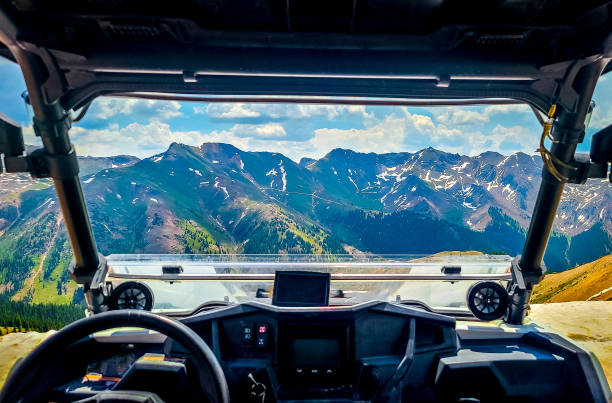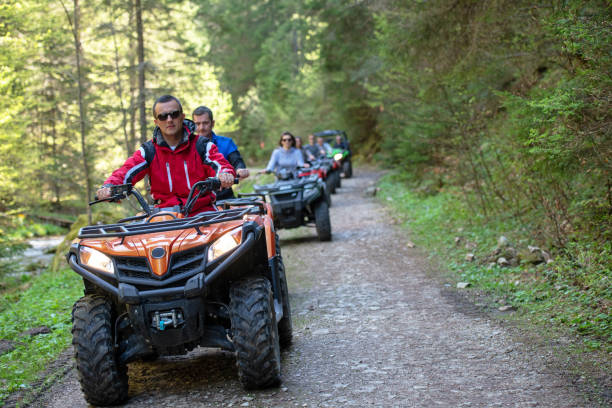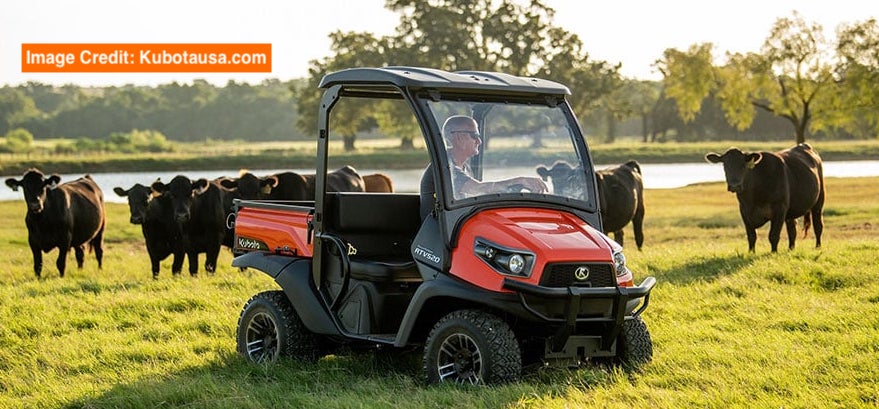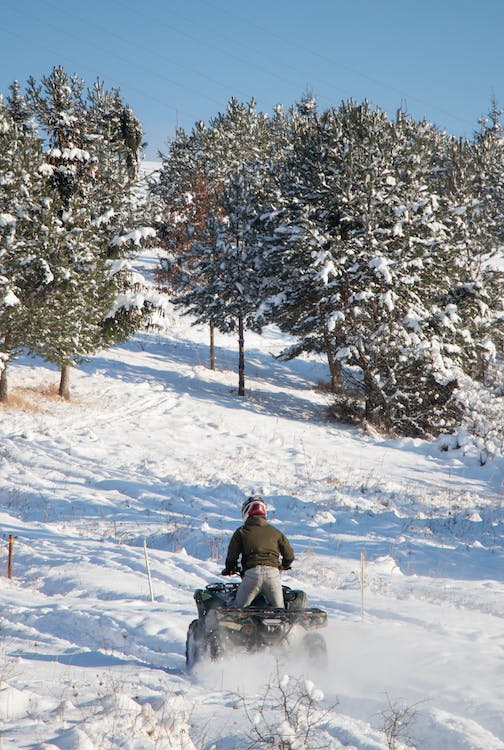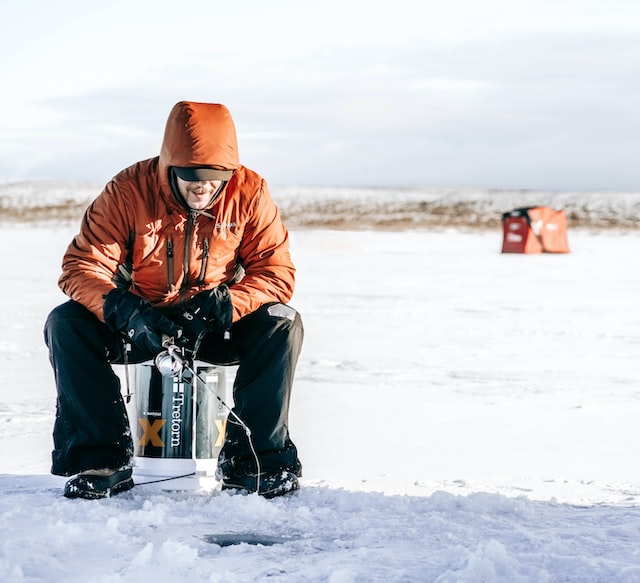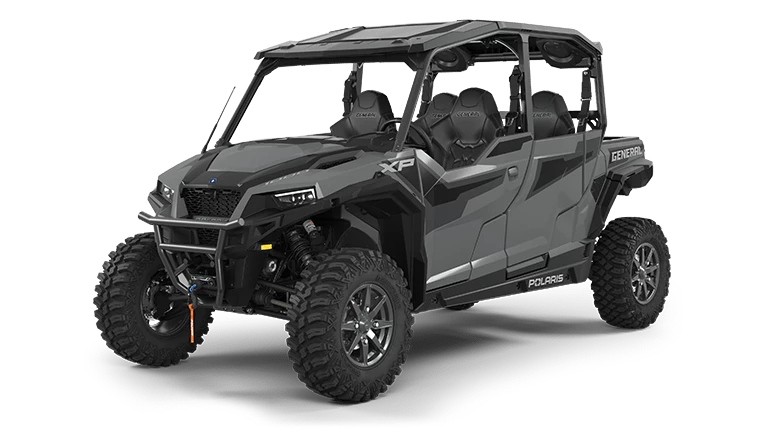As an Amazon Associate I may earn a commission from qualifying purchases at no additional cost to you.
Choosing the right recovery points for off-road adventures is vital for safety and efficiency. For ATV enthusiasts, the frame is the go-to place for anchoring recovery points due to its robust construction.
For Side by Sides, understanding the best attachment location is critical to ensure stability and prevent damage during recovery operations.

When selecting recovery points on an ATV, the frame offers a sturdy and reliable option, minimizing risks during recovery tasks. On Side by Sides, various attachment locations present different advantages, making it crucial to assess each option’s compatibility and durability.
This blog will explore these distinctions, helping off-roaders make informed choices tailored to their specific vehicle type and terrain challenges.
Understanding Recovery Points

Recovery points are essential elements for any off-road vehicle, playing a pivotal role in vehicle recovery. They provide secure attachment locations for pulling or winching out an ATV or Side by Side during off-road adventures. The durability and correct positioning of these points can significantly influence the recovery process.
Functionality of Recovery Points
Recovery points are integral for safe off-road vehicle recovery. They act as the main connection point for recovery tools, such as tow hooks or winches.
Ensuring these points are competent involves evaluating their strength and design.
Well-designed recovery points can prevent damage to the frame or chassis during recovery activities. Secure attachment to the vehicle’s structure is critical, as poorly affixed recovery points can fail under strain.
Many recovery points are compatible with D-rings, adding versatility to their use. These D-rings enhance the flexibility of recovery operations, as they can accommodate various recovery equipment. Users should be familiar with their vehicle-specific recovery points to optimize use and ensure safety.
Types of Recovery Points
Variety in recovery points offers options such as fixed hooks, removable points, and frame-mounted solutions.
Fixed hooks are typically permanent fixtures that provide quick attachment possibilities. Conversely, removable points allow flexibility and might be detached when not needed.
Frame-mounted options are often favored for their robustness and reliability. They distribute recovery forces across a larger area, lessening the risk of frame damage. D-rings often accompany these types for greater compatibility with recovery gear.
The choice of recovery point often depends on vehicle type, expected terrain challenges, and individual preference. It is crucial to match the recovery point type to the anticipated recovery situation to maximize efficiency and safety.
ATV Frame Specifics
An ATV frame serves as the backbone, influencing stability, performance, and recovery capabilities. Understanding specific elements such as chassis integrity, recovery point installation, and the impact on ground clearance and approach angle enhances the vehicle’s operational efficiency and safety.
ATV Chassis Considerations
The chassis of an ATV is a critical component defining the vehicle’s strength and durability. Primarily composed of materials like steel or aluminum, it provides the necessary support and rigidity for various terrains.
Chassis geometry significantly affects the ATV’s balance and handling characteristics, impacting its suitability for different riding conditions.
Manufacturers design chassis with a focus on robustness and weight distribution. Properly designed frames reduce stress during extreme maneuvers, ensuring reliability.
It’s important to assess the frame regularly for any signs of wear or damage which could compromise safety and performance.
ATV Recovery Point Installation
Installing recovery points on an ATV frame requires careful consideration to ensure safety and effectiveness. Recovery points should be attached to the strongest part of the chassis, typically near the front or rear. They must withstand the forces exerted during towing or recovery operations.
Selecting the right hardware is crucial; grade 8 bolts and reinforced brackets are often recommended.
Regular maintenance of the recovery points is essential to prevent rust and ensure they remain secure. Properly installed recovery points enhance the ATV’s versatility and capability in challenging situations.
Ground Clearance and Approach Angle
Ground clearance and approach angle are pivotal in defining an ATV’s off-road performance.
Ground clearance refers to the distance between the ground and the lowest point on the ATV, affecting its ability to traverse obstacles without bottoming out. A higher clearance improves off-road capability but may impact stability.
Approach angle, the maximum incline an ATV can climb or descend without hitting the ground, depends heavily on frame design and clearance.
Enhancing these parameters often involves frame modifications or suspension adjustments to achieve a balanced performance. Prioritizing these factors ensures the ATV can tackle diverse terrains without compromising safety.
Side by Side Attachment Locations
Side by Side (SxS) vehicles require specific attention to attachment locations for effective recovery operations. These points must ensure adequate load capacity while allowing for potential enhancements to improve overall recovery functionality.
Attachment Points and Their Load Capacities
SxS vehicles often come equipped with multiple attachment points, including front and rear tow points. These points are typically reinforced to handle various angles and loads. The load capacity of these points can vary significantly, based on the manufacturer and model.
One critical factor is the mounting points where these attachments are installed. They must be robust enough to withstand substantial forces during recovery operations.
It is important to confirm the rated capacity of each attachment point to prevent potential damage to the vehicle’s frame. Always consult the vehicle’s manual for specific load limits.
Enhancing Side by Side Recovery Features
Upgrades and enhancements can significantly improve the recovery capabilities of a Side by Side.
Common enhancements include installing aftermarket bumpers with integrated winch mounts and more robust tow hooks. These additions can improve ease of use and provide additional recovery options.
To optimize these features, users may also consider features such as reinforced installation of attachment points. This ensures that the vehicle can manage recovery situations without compromising safety or performance. Custom fabrication and professional installation are recommended for precise and reliable modifications.
Winching Fundamentals
Winching is an essential skill for both ATV and Side by Side (SxS) vehicle owners, providing a reliable method to recover a vehicle stuck in challenging terrain. Key aspects include selecting an appropriate winch and ensuring a secure mounting setup.
Choosing the Right Winch for Your Vehicle
Selecting the right winch involves evaluating several factors.
Weight capacity is crucial; the winch’s capacity should be at least 1.5 times the vehicle’s gross weight. For ATV winches, typical capacities range from 2,500 to 4,500 lbs.
Line speed is also important for efficiency during recovery operations. Faster speeds help in quick recoveries, though they might consume more power.
Synthetic vs. steel cable is a vital choice. Synthetic lines are lightweight and safer if they break, while steel cables offer durability in abrasive conditions.
It’s important to consider the power source; most winches connect to the vehicle’s battery. Ensuring compatibility with the vehicle’s voltage is necessary to prevent electrical issues.
Best Practices for Winch Mounting
The integrity of the winching system largely depends on how well the winch is mounted.
Using dedicated mounting kits ensures the winch is properly secured to the vehicle’s frame, providing stability and strength. These kits often contain specifically designed brackets and hardware tailored for different models.
Positioning matters. The winch should be mounted centrally at the front of the vehicle for optimum pulling power. This reduces stress on the mounting points and helps in maintaining balance.
Regularly check mounting bolts and hardware for signs of wear or loosening.
Additionally, protecting the winch from environmental elements extends its lifespan. Consider installing a winch cover to shield against moisture and debris when not in use.
Additional Recovery Equipment

Beyond the foundational elements of recovery points, investing in bumpers and towing accessories can enhance off-road capabilities. These components not only improve safety but also ensure that recovery operations are efficient and effective.
Bumpers and Bull Bars
Bumpers and bull bars provide an essential layer of protection and functionality. They are often bolt-on accessories, which simplifies installation.
Front bumpers can protect the engine and vital components from impacts, while backing plates ensure stability during recovery operations.
When selecting a bumper, it’s crucial to ensure compatibility with tires and other vehicle components to avoid clearance issues. High-quality materials and design considerations such as mounting locations enhance both durability and functionality during demanding recovery scenarios.
Towing Accessories and Considerations
Towing accessories are vital for any off-road enthusiast.
It’s important to include items like tow straps and shackles, which are indispensable for recovery tasks.
Consider the vehicle’s weight and towing capacity to ensure the selected accessories won’t compromise safety.
Towing setups should be thoroughly assessed for effective weight distribution and connection integrity. Regular inspection of all components, from the bumper to the hitch points, prevents equipment failure. Prioritize purchasing accessories designed specifically for the vehicle type, ensuring a secure and reliable fit.
Installation and Maintenance

Proper installation and maintenance of recovery attachments are crucial for optimal performance. This involves understanding how to effectively install recovery attachments on both ATVs and Side by Sides, and the importance of conducting routine checks and maintenance.
Installing Recovery Attachments
The installation process begins with identifying suitable mounting points. These points should be robust enough to handle the force exerted during recovery.
For ATVs, mounting points might include the axle or frame. Side by Sides often have designated areas for recovery attachments.
Using a grinder may sometimes be necessary for cleaning or preparing the surface. When installing the attachments, it is vital to ensure they are securely fastened. Bolts should be tightened to the manufacturer’s specifications to prevent movement during use.
Routine Checks and Maintenance Tips
Regular inspections of recovery attachments are necessary to ensure they remain in good condition.
Key areas to check include the attachments themselves and their mounting points. Look for signs of wear, rust, or any damage that may compromise integrity.
Routine checks should be conducted before and after each use. This practice helps in identifying potential issues early, preventing accidents during recovery operations.
Tightening bolts and applying lubricant can also prolong the lifespan of the attachments.
Incorporating these habits into your maintenance routine contributes to safer and more effective recovery operations.
Keeping a checklist can help ensure all components are inspected and maintained as needed.
Pricing and Value Assessment

Selecting the right recovery tools for ATVs and Side by Sides involves both cost considerations and the importance of investing in quality systems.
Understanding the financial investment required for robust recovery setups is essential for long-term vehicle performance and safety.
Cost Considerations for Recovery Setups
When assessing recovery points for ATVs versus Side by Sides, cost differences can be notable.
ATVs might require fewer components, resulting in lower initial costs. A basic hook setup for an ATV could range from $50 to $100, whereas more complex winch systems for Side by Sides may start at $300.
Beyond initial purchase prices, installation costs should also be considered. Professional installations, especially for Side by Sides, can add significant expenses.
Additionally, maintenance and potential replacements should factor into the budget.
Investing in Quality Recovery Systems
Paying for premium recovery systems may save money in the long run.
High-quality materials like reinforced steel or advanced composites offer better durability. The longevity of these materials helps reduce the frequency of replacements, thus representing better value over time.
While upfront costs are higher, benefits include improved safety and reliability. Quality systems often receive better user reviews and typically include comprehensive warranties, providing extra assurance.
For both ATVs and Side by Sides, investing in robust recovery equipment is sensible from a value perspective.
Vehicle Traction and Maneuverability

The traction and maneuverability of a vehicle are critical for handling various terrains. Factors such as the drive system and vehicle modifications affect performance significantly. Understanding these elements can enhance vehicle capability and safety.
2WD vs. 4WD Traction Differences
Two-wheel drive (2WD) systems power either the front or rear wheels. They are suited for lighter terrain, offering adequate traction under specific conditions. Their fuel efficiency is often better, due to fewer components in motion.
Four-wheel drive (4WD) systems, by comparison, distribute power to all wheels. This enhances traction on challenging terrains such as mud, snow, or steep inclines.
4WD systems typically provide increased stability in precarious conditions, though they can be heavier and less fuel-efficient.
Vehicle choice between these systems depends on expected terrain challenges. It’s essential to choose based on the typical surfaces encountered.
Optimizing Vehicle for Terrain Challenges
Effective traction involves more than choosing the right drive system.
Tire selection plays a crucial role, as various tread patterns and materials cater to different environments. Off-road tires, for example, have deeper treads for better grip on loose surfaces.
Adjustable suspension can also affect maneuverability, allowing vehicles to maintain balance and optimize wheel contact.
Considering terrain-specific modifications like winches or differential lockers can further improve a vehicle’s off-road capability.
Each modification should be considered based on its specific benefits and the terrain. Balancing enhancements while maintaining vehicle integrity ensures optimal performance.
Transport and Towing Capacity

Transport and towing capacity are essential considerations when selecting an ATV or a Side by Side vehicle. Factors like engine power, trailer types, and front tow hook usage play a crucial role.
Understanding Towing Dynamics
Towing dynamics involve several key features such as engine performance, axle strength, and proper weight distribution.
The engine’s capacity determines how effectively a vehicle can tow a trailer without straining itself or compromising performance. Axle strength is pivotal for managing the additional load of the trailer, ensuring stability and safety.
Weight distribution impacts handling. Poor distribution may lead to swaying or even a loss of control. Front tow hooks specifically aid in controlling and stabilizing the movement, offering enhanced safety.
Evaluating these dynamics ensures an optimal towing experience.
Being aware of these dynamics helps in choosing the right vehicle for towing needs.
ATV and Side by Side Towing Tips
For optimal towing, regularly checking the trailer’s attachment is essential. Weak connections can lead to accidents or damage.
It’s important to choose a trailer that matches the vehicle’s towing capacity. This capacity is determined by engine strength and axle specifications.
Using front tow hooks when attaching a trailer aids maneuverability. These hooks ensure secure connections, preventing unwanted movement.
Ensure regular maintenance of the towing setup, including brake checks and tire pressure monitoring. This proactive approach guarantees safety and prolongs the lifespan of both the ATV and the trailer.
Avoid overloading the vehicle to maintain its operational efficiency. Overloading strains the engine, which can affect performance.
Each component, from the engine to the axle, plays a role in optimizing towing, ensuring both safety and longevity.

